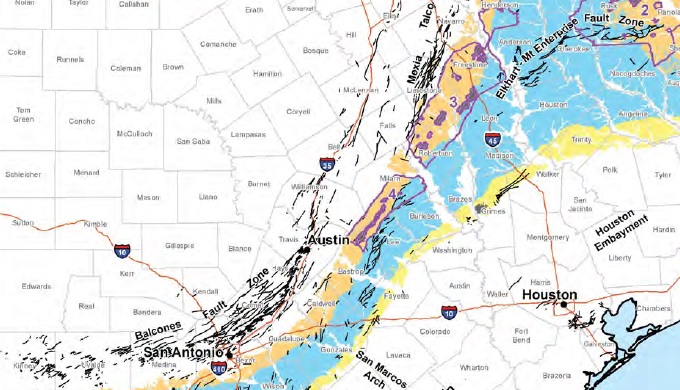In San Marcos, you will find a rare cave. Wonder Cave did not originate the same as other caves in the Texas Hill Country. Rather than the result of water eating away at limestone, Wonder Cave formed from the movement of the earth. Yes, an earthquake created Texas’s Wonder Cave. Explore the cave itself and why it’s so different from other caves in Texas.
Nature
How Earthquakes in Central Texas Created Wonder Cave
Formation of Wonder Cave

Photo: Wikimedia Commons
Wonder Cave did not have the same origins as other commercial caves in the state. Rock moving along fault lines during ancient earthquakes opened the space that created the cave. The Texas Hill Country is much higher than the coastal plain of the state. This uplifted region created a series of cracks in the stone, known as the Balcones Fault Zone. You can see this area from the surface when you reach higher elevations when driving to the Hill Country from Houston or Corpus Christi. The fault generally follows I-35, and actually is made up of multiple smaller faults. A minor earthquake along one of these faults moved the rock enough to create the space known as Wonder Cave today.
What Makes Wonder Cave Unique

Photo: Facebook/Wonder World Cave and Park
When you visit this site, immediately, you will notice the lack of humidity. If you have ever visited a Texas cave, it may be 70 degrees inside but it feels much hotter due to the high humidity. Most Texas caves formed from water slowly wearing away at limestone over the years. This water increases the humidity levels in the cave, but geologists call Wonder Cave a “dry cave.” Inside the cave, the temperatures hover around 72 degrees Fahrenheit, but the humidity is almost nonexistent, which makes this an ideal spot to stop during the heat of the summer. While you will not see any drip formations in this cave as you would in other water-formed caves, you can spot the fault that formed this cave in the ceiling. Don’t forget to look up when you visit.
Earthquakes in Texas?

Photo: Wikimedia Commons
Yes, earthquakes have occurred in Texas, and even in the central part of the state. The most recent activity along the Balcones Fault zone was a minor earthquake in Austin in 1902. Compared to the major tremblors in other countries and even in California, it was barely perceptible. In fact, most people probably didn’t notice it. This rare incident was likely one of the few tremors over the last 15 million years, when this fault zone experienced regular activity. Geologists rate the Balcones Fault as one of the lowest risk for earthquakes, which means Texans can rest easily knowing that an earthquake in the Hill Country is unlikely.
References:



